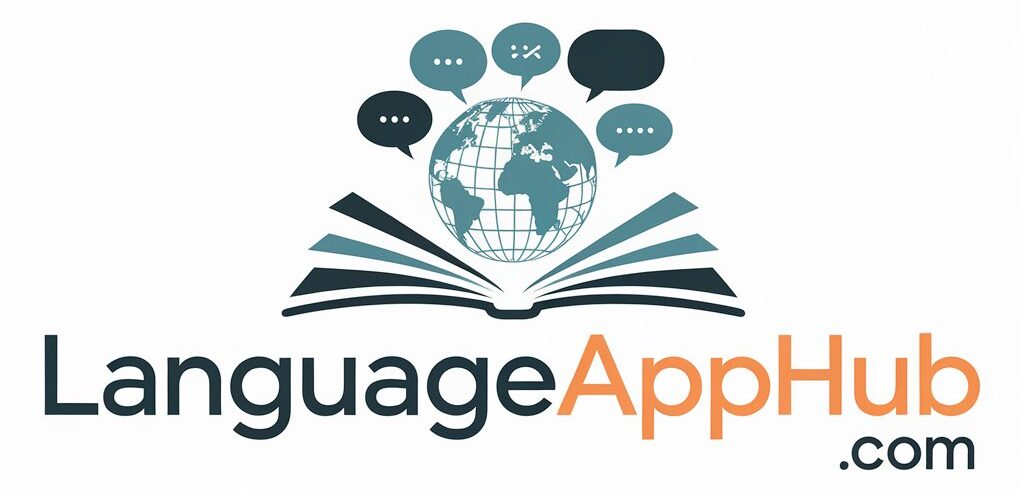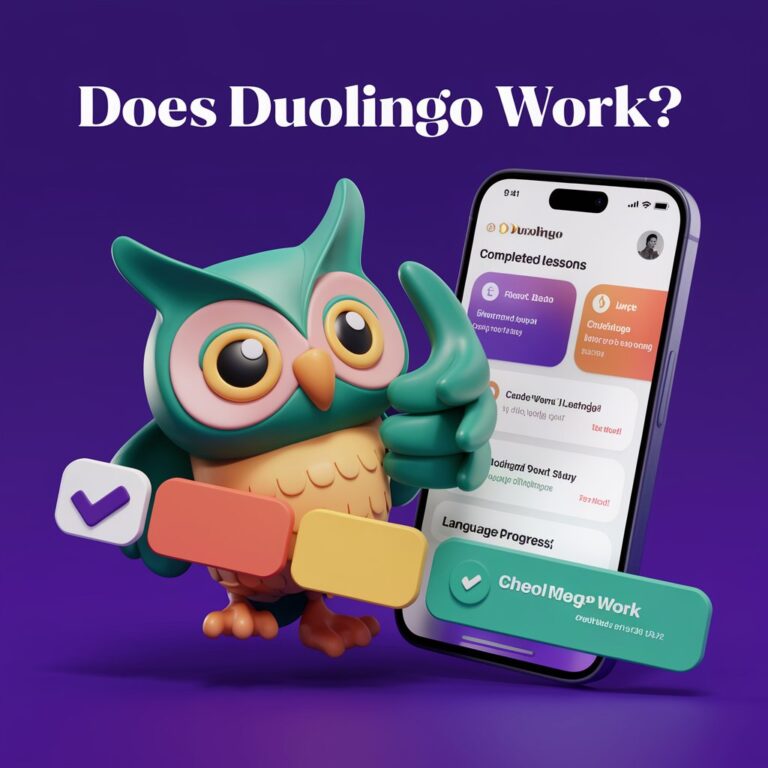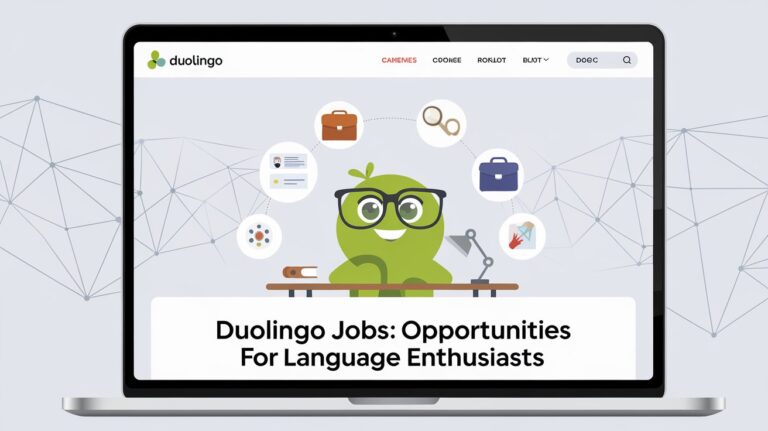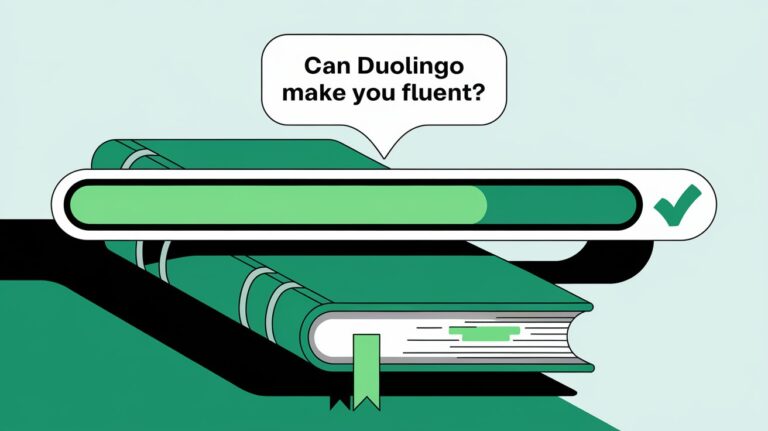What Are All The Leagues In Duolingo: Complete Guide

Duolingo’s language learning platform has a special competitive system called leagues. These leagues range from Bronze to Diamond. They make learning a language fun and competitive.
Users earn experience points (XP) by winning weekly contests. This helps them move up the ranks. It creates a sense of achievement and friendly rivalry in the Duolingo community.
Each league has 30 random users competing for the best spots. There are rules for moving up or down the leagues. This system keeps users coming back every day, using their competitive spirit to learn more.
As users get better, the XP needed to move up increases. This makes the challenge more exciting. It keeps learners motivated and interested in their language journey.
Competition Structure and League Mechanics
Duolingo’s language learning platform has a competitive league system. It keeps users engaged and motivated. The leagues reset every Monday at midnight UTC.
Each league has 30 users who start earning XP at the same time. This ensures a fair competition.
Weekly Reset System
The weekly reset system in Duolingo’s leagues is dynamic. Users must earn XP all week to stay in their league. This creates a sense of urgency and keeps users active.
XP Requirements and Progress
XP needs vary by league. Lower leagues like Bronze need 1,000-2,000 XP per week. Higher leagues like Ruby and Emerald need 17,500 and 19,000 XP, respectively.
The best users in each league move up. This keeps the competition challenging and progressive.
League Size and Participation Rules
Duolingo’s leagues aim to build a community and fair competition. Each league has 30 participants. Users must be at least 13 and complete 10 lessons a week to join.
This ensures leagues are manageable. The competition is based on real language learning, not just XP.
Understanding Duolingo’s league mechanics helps users plan their progress. They can increase their chances of moving up. This makes the duolingo user progress tracking and duolingo competitions more rewarding.
Bronze League: First Steps in Competition
The Bronze League is where all duolingo courses beginners start. It’s a place where new users and those coming back from breaks meet. This league is key for those new to Duolingo, helping them feel more confident as they begin their community language learning adventure.
To move up from the Bronze League, you must rank in the top 20 out of 30 players. This goal is achievable, even for beginners. It lets everyone enjoy the excitement of competing and move forward. The Bronze League is a friendly space for learners to try out Duolingo’s fun way of learning languages and see how competition can help.
| League | Advancement Requirement |
|---|---|
| Bronze League | Top 20 out of 30 players |
| Silver League | Top 15 out of 30 players |
| Gold League | Top 10 out of 30 players |
Mastering the Bronze League helps learners improve their language skills. It also builds their competitive spirit and determination. These are important for doing well in Duolingo’s higher leagues.
Silver and Gold Leagues: Building Momentum
As users move up in Duolingo, they hit the Silver and Gold leagues. These levels show a big jump in their language skills. They are made to test users, pushing them to get better at speaking and understanding.
Silver League Advancement Rules
To get into the Silver League, users face tougher competition. Only the top 15 from the Bronze League make it. In the Silver League, users need to work hard to keep their spot or move up.
Gold League Competition Intensity
Reaching the Gold League is a major milestone for Duolingo users. It shows they’re getting really good at the language. The competition gets even harder, with only the top 10 moving on to the Sapphire League.
Users in the Gold League spend a lot of time and effort. They aim to do many lessons every day. This is to stay ahead in the competition.
The Silver and Gold leagues are a big step up from just learning casually. Users have to find smart ways to earn XP and stay ahead. This shows their serious commitment to learning the language through Duolingo.
What Are All The Leagues In Duolingo
Duolingo is a well-known platform for learning languages. It has a competitive system with 10 leagues. These leagues go from Bronze, for beginners, to Diamond, for the most dedicated.
As you move up the leagues, the competition gets tougher. The XP (Experience Point) needed to move up also increases. Here’s how the leagues are set up:
- Bronze League: The starting point for new users
- Silver League: Intermediate level of competition
- Gold League: Signifies a higher level of commitment
- Sapphire League: Denotes a surge in performance
- Ruby League: Further escalates the challenge
- Emerald League: Showcases advanced language skills
- Amethyst League: Indicates exceptional proficiency
- Pearl League: Reflects the pinnacle of language mastery
- Obsidian League: Represents the penultimate level of competition
- Diamond League: The ultimate achievement in the Duolingo hierarchy
The Duolingo league system aims to keep users motivated. It encourages daily practice and competition. Climbing the ranks brings bigger rewards and a greater sense of achievement.
Sapphire and Ruby Leagues: Climbing Higher
The Duolingo leagues have reached a new level of excitement as users ascend to the Sapphire and Ruby tiers. These gem-themed leagues mark a significant milestone in the language acquisition through gamification journey. Only the top 7 performers in each league can advance to the next challenge.
In the Sapphire League, dedicated language enthusiasts showcase their skills. They often boast lengthy learning streaks and a keen ability to maximize their experience points (XP) gains. Users in this league frequently leverage XP boosts and timed challenges to gain an edge over their competitors.
The Ruby League shines even brighter, attracting the most driven and skilled Duolingo users. These individuals are masters of the platform, employing strategic techniques to earn impressive weekly XP totals. Often, they exceed 1,000 points. Advancing to the Ruby League requires grit, determination, and a deep passion for language learning through gamification.
Climbing the ranks from Sapphire to Ruby is no easy feat. Only the top 7 users in each league can progress to the next level. This intense competition ensures that the Duolingo community is constantly challenged to push their language skills to new heights. It fosters a culture of excellence and friendly rivalry.
Emerald and Amethyst Leagues: Advanced Territory
Users who move up in Duolingo’s leagues reach the Emerald and Amethyst Leagues. These levels are for the most committed learners. They work hard to stay ahead of others.
Strategic XP Earning Methods
At this level, Duolingo users use many strategies to earn more XP. For example, those in the Amethyst League use stories and friend quests to increase their scores. These methods help them keep their league status and keep learning.
Competition Intensity Levels
The competition in the Emerald and Amethyst Leagues is very tough. Users need to plan their study and practice every day to stay in the game. The Amethyst League is known for its strong rivalries. Learners here challenge each other to improve their language skills through tracking and community efforts.
Pearl and Obsidian Leagues: Elite Levels
Duolingo’s top levels are the Pearl and Obsidian leagues. They are for the most dedicated and skilled users. These levels show the top 1% and top 5% of Duolingo users, highlighting their hard work in learning new languages.
The Pearl League is for Duolingo’s best. Its members spend hours every day improving their language skills. They use every strategy to earn more XP and stay ahead.
The Obsidian League is the second-highest tier. It’s very competitive, with only the top 5 users from each league moving to the Diamond League. Users here show their dedication and skill through consistent high scores.
| League | Rank Within Duolingo | Weekly XP Requirements |
|---|---|---|
| Pearl | Top 1% | Hundreds or thousands of XP per week |
| Obsidian | Top 5% | Hundreds or thousands of XP per week |
Reaching the Pearl and Obsidian leagues is quite challenging.It takes a lot of commitment and skill. These levels show the best of Duolingo, inspiring others to do their best in language learning.
Diamond League and Tournament System
The Diamond League is the top level of the duolingo language learning platform. It’s where the most dedicated and skilled learners compete. Only the top 10 from each week get to join the Diamond Tournament.
Tournament Qualification Process
To make it to the Diamond Tournament, you need to be in the top 10 of the Diamond League the week before. This means only the best language acquisition through gamification fans get to play in this top competition.
Three-Week Tournament Structure
- Quarterfinals: The tournament starts with the Quarterfinals. The top 10 from the Diamond League compete to move on to the Semifinals.
- Semifinals: Those who make it through the Quarterfinals face off in the Semifinals. The best ones move on to the Finals.
- Finals: The Finals is the final showdown. It decides who will be the Diamond Tournament champion.
As the tournament goes on, the number of competitors gets smaller. This shows who really knows their stuff on the duolingo language learning platform.
Championship Rewards
The winner of the Diamond Tournament gets a special badge. They are recognized as Duolingo’s best. This achievement shows off their language skills and inspires others in the language acquisition through gamification world.
Group Goals and Rewards System
Duolingo has a new way to help people learn languages. It has a group goal system where each league works together to reach a target. The targets range from 1,000 XP in the Bronze League to 100,000 XP in the Diamond League.
When they hit these targets, everyone gets gems. Gems are Duolingo’s virtual money. This makes learning a language more fun and rewarding.
This system brings people together. It makes them work as a team and support each other. It’s a mix of teamwork and competition.
It also helps with personal growth. Learners keep improving on their own while enjoying the team effort. This mix of gamification and social learning is very effective.
Studies show that users who follow friends are 5.6 times more likely to finish their courses. This shows how well the group goals system works.
Most-Asked Questions
What are all the leagues in Duolingo?
Duolingo has 10 leagues, from Bronze to Diamond. These leagues help motivate learners and track their progress.
How does the Duolingo league system work?
Leagues are weekly contests where users earn XP to climb ranks. Each league has 30 random users competing for top spots. It encourages daily engagement and uses competition to improve language skills.
What are the requirements to participate in Duolingo leagues?
Users must complete at least 10 lessons and be at least 13 years old. Any method that earns XP counts towards the competition total.
What is the Bronze League in Duolingo?
The Bronze League is for all Duolingo users starting out. It’s diverse, with both new and returning users. To move up, users must finish in the top 20 out of 30.
How do the Silver and Gold Leagues work in Duolingo?
In the Silver League, only the top 15 users move to Gold. The competition gets fiercer, with users finding ways to earn XP efficiently. The Gold League is a big milestone, where only the top 10 advance to Sapphire.
What are the higher-level leagues in Duolingo?
Duolingo has 10 leagues: Bronze, Silver, Gold, Sapphire, Ruby, Emerald, Amethyst, Pearl, Obsidian, and Diamond. As users progress, the competition gets tougher, and XP requirements rise.
How do the Sapphire and Ruby Leagues work?
Sapphire marks the start of gem-themed leagues. From Sapphire on, only the top 7 users advance to the next league. The Ruby League is for dedicated learners who are skilled at earning XP.
What are the Emerald and Amethyst Leagues like?
The Emerald and Amethyst Leagues are for Duolingo’s most dedicated learners. Users here often complete lessons in different languages to stay competitive. In the Amethyst League, learners use strategies like completing stories to boost their XP.
What are the highest-level leagues in Duolingo?
The Pearl League is for the top 1% of Duolingo users. Members spend hours daily to keep their spot. The Obsidian League is the second-highest tier, where only the top 5 advance to Diamond.
How does the Diamond League and Tournament System work?
The Diamond League is the highest level of competition. The top 10 each week qualify for the Diamond Tournament. This three-week competition has quarterfinals, semifinals, and finals. The winner gets a special badge and is recognized as Duolingo’s top competitor.
What is the Duolingo group goals and rewards system?
Duolingo has a group goal system where each league has a collective XP target. Meeting these goals rewards all participants with gems. This system encourages teamwork and competition, building a sense of community while tracking individual progress.






